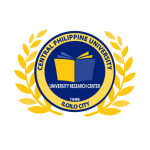- by Ernesto S. Elefan (completed January 2006)
ABSTRACT
This botanical survey carried-old to classify and identify the indigenous medicinal plant that thrive in Brgy. Agsalanan, Dingle, Iloilo and assess their medicinal uses and conservation status. Frequency and percentage were the only statistics used or the study. Result shows that 155 plant species arc under the 137 genera and 61 families of which 31.61%, 34.19%, 21.79%, 7.09%, 3.23%, 1.94%, and 0.65% were trees, herbs, shrubs vines/climbers, grasses, palms, and a sedge, respectively. A relatively higher number o medicinal species belong to Euphorbiaceae, Fabaceae, Asteraceae, Solanaceae, Lamiacea, Poaceae and Verbenaceae families. The medicinal uses range from a simple skin irritation to a deadly tumor and human cancer. Those reported to have anti-cancer property include, among others, Tsaang gubat (Carmona retusa Vohl.) Masam), Bamban (Donax cannaeformis(Forts. f.) K. Schum), Rosas de Babaylon (Catharanthus roseus L.), Pandakiki (Tabernaemontana pandacaqui Poir), Lomboy (Syzygium cumini (L.) Skeels), Bulubito-on (Barringtonia asiatrica(Linn.) Kurz.) and Niyog (Cocos nucifera L.). At least 59 (38.06 %) were found to be endangered, threatened, depleted, or vulnerable plant species. Meanwhile, 83 (53.55%) plant species have been assessed as abundant and 13 (8.39 %) were indeterminate in terms of conservation status.
